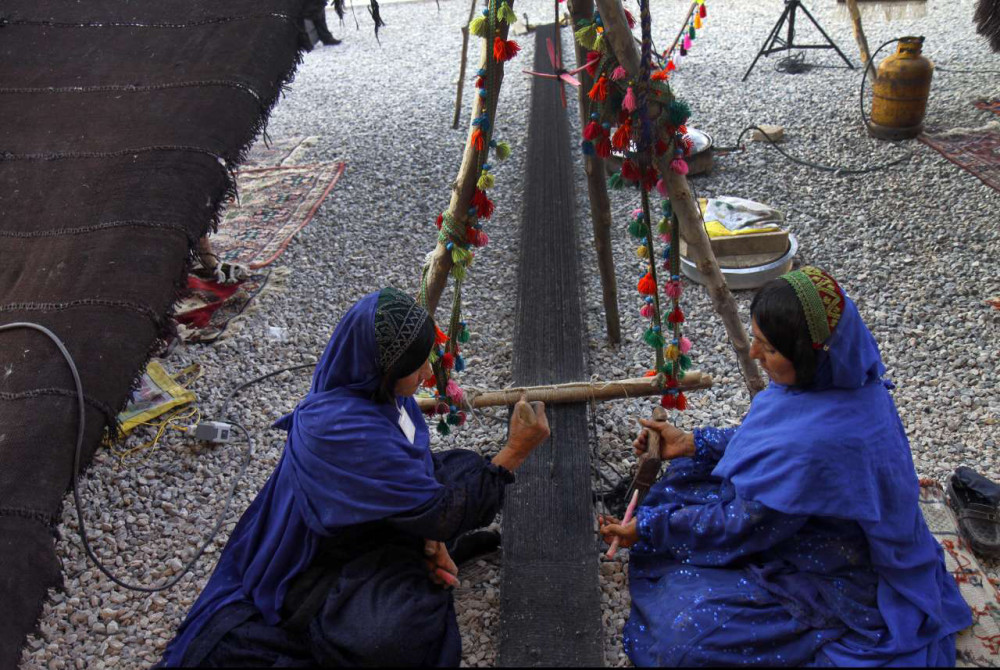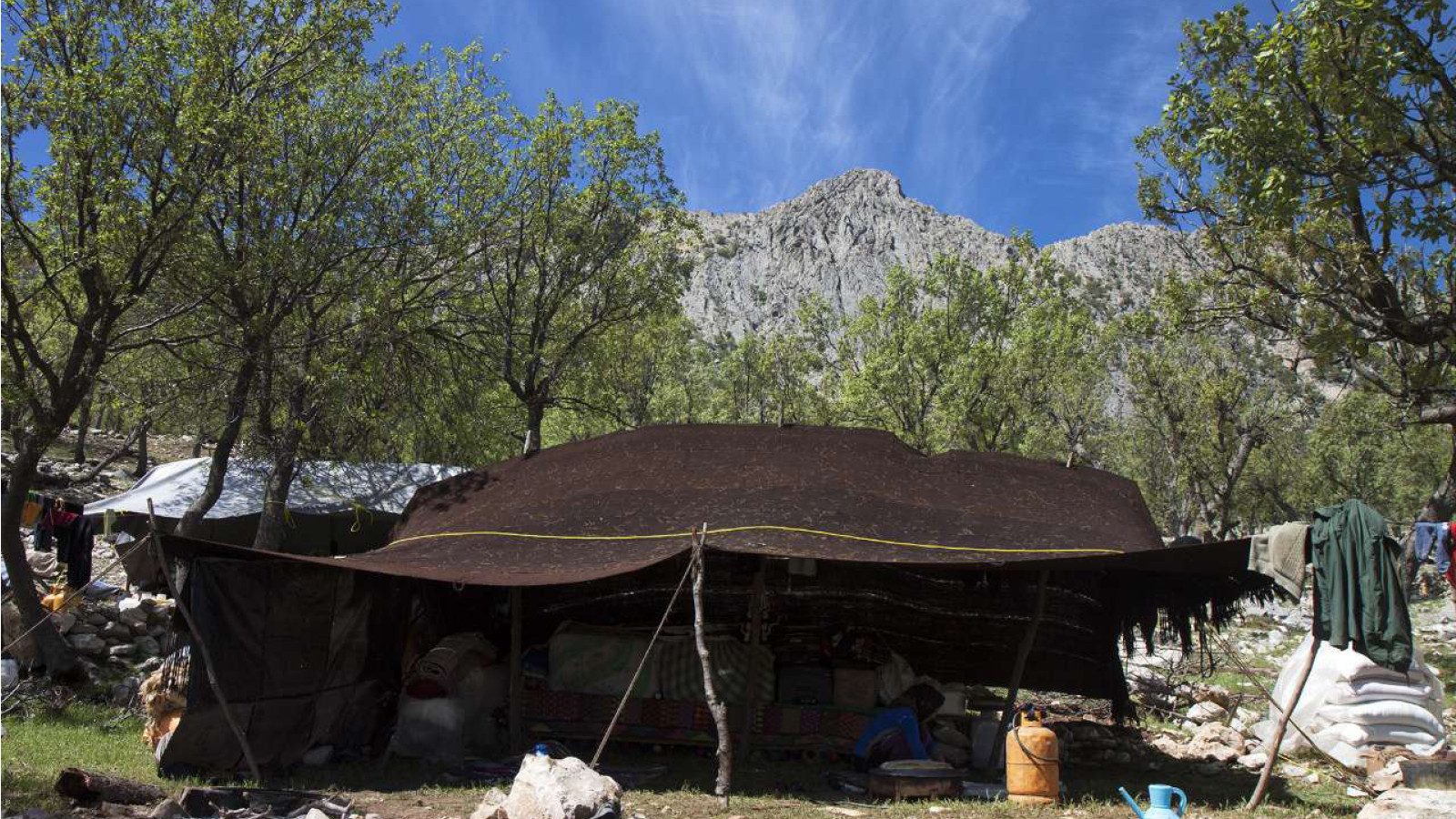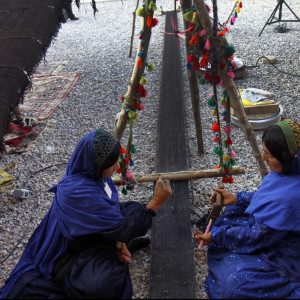
Black Tent Weaving (Chahar Mahal and Bakhtiari)
Black Tent Weaving is one of the handicrafts of nomads and villagers. It is a completely traditional product which is mainly woven by the tent dweller nomads from goat wool used as the roof of the tent. The wool of goat has a special feature for maintaining water while raining and the rain water is not usually penetrated into its texture. In addition to its pleasant shadow in the warm seasons, it includes a netted fabric through which air can easily move. The hair of goat prevents the biting insets from entering the tent; it is easily fold up and movable while migrating and therefore, is the best coverage for nomads’ tents. It also should be stated that this kind of wool is easily available and inexpensive. Every family is usually the owner of twenty to fifty goats the wool of them is used in weaving tents. The settlement of nomads is called Alachiq which includes two parts; the upper part of the tent (or roof) is named black tent which is woven of the wool of the goat. The other part is the sidelong wall named Chiq made of a combination of hair of goat and straw. Lat is a piece of the black tent in form of a woven strand which are made by women using a traditional tool in their own location. Lat is between forty to sixty centimeters wide and six, ten or even fifteen meters long. After finishing the process of weaving Lats, women start to sew them together in order to gradually form the black tent. Based on the traditional thought of people in Chahar Mahal and Bakhtiari region, black tent symbolizes the magnanimity of the nomad tribe. Nomad women boil the black hair of goat in the lukewarm water, and then spin and beat them to form woolen plates of three to five millimeters. They need three vertical poles and a main one as well as stone and nail for holding tent after forming it. Traditionally, people pitched their black tents while immigrating with certain events and rituals like singing and reading Quran. The bigness of black tent allowed nomads and shepherd to all gather in one of the tents each night. The history of the handicraft dates back to ancient era.

